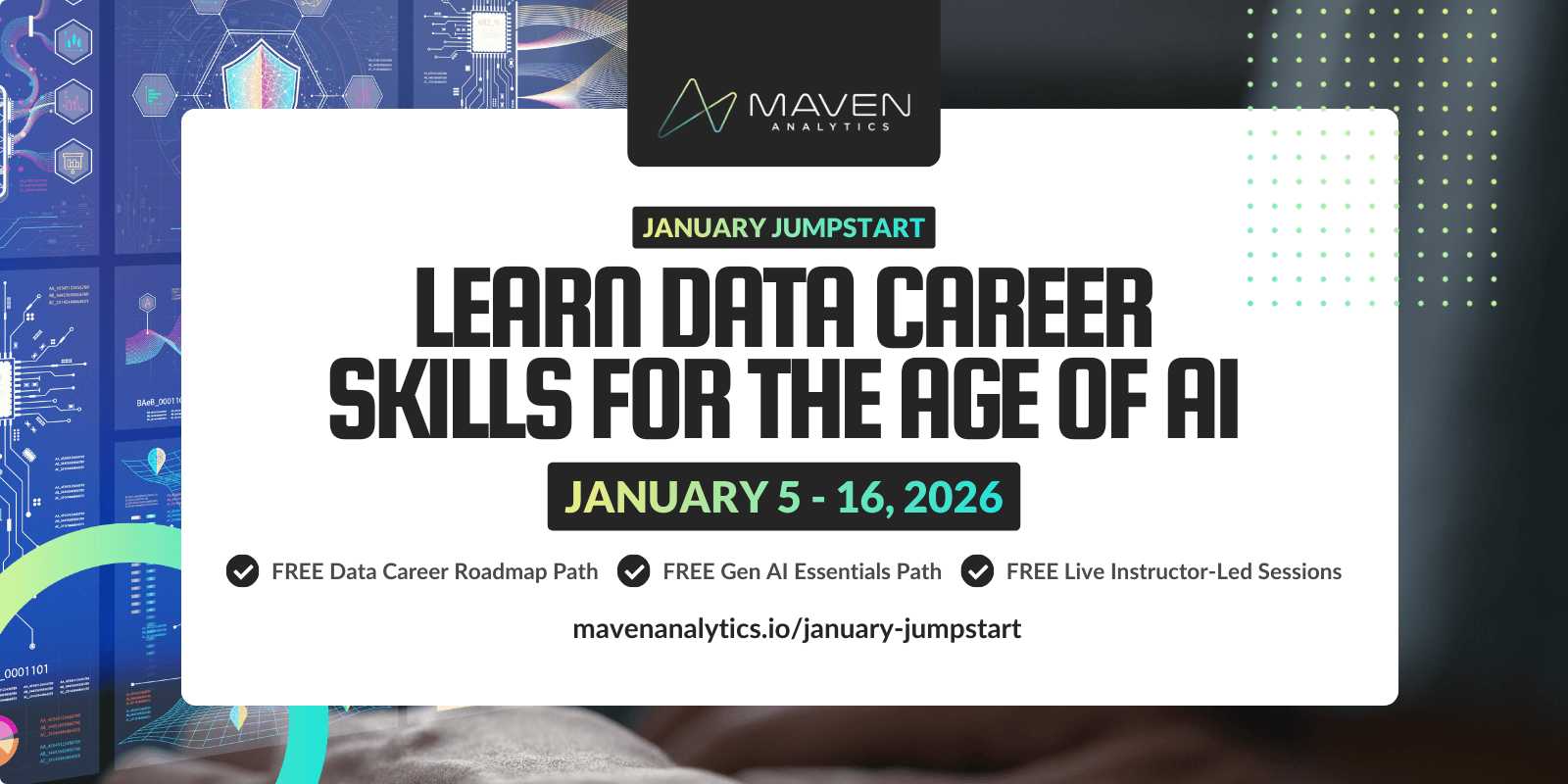In the last decade, Python has grown from niche use to become one of the most popular tools for data analytics.
If you want to land a job as an analyst or data scientist at a tech company, you won’t get far without learning Python.
Learning Python for analytics can be daunting. It has a steeper learning curve than most tools, especially if you’re new to coding.
Given that Python is a general purpose programming language used for much more than analytics, it can be challenging to figure out what to learn among the wide variety of courses and paths.
Even within the analytics space, there are dozens of libraries used for data manipulation and analysis.
A beginners roadmap to learning Python
Looking to learn Python for analytics? Here’s a roadmap for beginners to get started:
Base Python
You do NOT need to be able to engineer software with Python to do analytics. Most of the work analysts do in Python is done via a handful of libraries. In order to use those effectively, you need to understand the essentials of Python syntax, Python’s data types, conditional logic, loops, and functions. You will pick up more as you continue to work with Python, but moving on to the following libraries without the essentials will make it much harder to use them effectively.
Pandas
Pandas is THE library for analytics and data manipulation in Python. The Pandas DataFrame is analogous to an Excel worksheet or SQL table, and allows users to read in, manipulate and analyze datasets with ease. With Pandas, we can read in millions of rows of data from an SQL database, create summary or pivot tables with key statistics, and visualize our findings before exporting our summaries to a flat file. There are over 400 functions and methods in Pandas, which gives users a vast arsenal of tools, but can also be overwhelming when learning the library. A good course on Pandas will be well worth the investment.
Data Visualization
Consider this the elective portion of our curriculum. There are many data visualization libraries in the Python ecosystem. You need to be proficient with at least one, but depending on your needs, the one you choose to focus on may differ.
Matplotlib is the original plotting library in Python, and is still the most widely used. It allows for extreme customization, but can also be challenging to work with. Given its widespread use, I’d suggest learning at least the basics, but depending on your use case, you may choose not to go deep here.
Seaborn, which is built on matplotlib, is much easier to work with, has more appealing default styling and adds some excellent chart types to the mix. We sacrifice some customization, but seaborn tends to be my go to library when exploring a dataset and visualizing the results of an analysis.
If your focus is interactive charts and dashboards, try plotly. It produces amazing looking visualizations with interactive tooltips that help users and stakeholders alike understand the data. Additionally, its sister library dash allows for the creation of web based dashboards containing the charts built in plotly, which makes it a great open source BI option.
Beyond the essentials
Once you’ve learned the fundamentals of base Python, achieved proficiency with Pandas, and are competent with a data visualization library, the world is your oyster. From here, you will be able to pick up additional skills and libraries with relative ease. Want to scrape data from the web? Try scrapy. Interested in Machine Learning? Start with scikit-learn. Need extra horsepower for those massive datasets? PySpark has you covered.
Keep learning
Learning Python can be daunting at first, but if you stick to the roadmap above and practice your skills consistently, you’ll be acing those tech interviews in no time. (ok, you need to know SQL too, but my colleage John Pauler has you covered there!)
Happy Learning!
PS - check out our Python library here on Maven Analytics!
Happening NOW: Free Course Access + LIVE Learning
January Jumpstart is here -- don't miss this chance to kickstart your new year!
Join us January 5th - 16th to jumpstart the new year with LIVE instructor-led learning sessions and FREE course access to our top career & AI learning paths. Let’s make AI your new data superpower in 2026!

Chris Bruehl
Analytics Engineer & Lead Python Instructor
Chris is a Python expert, certified Statistical Business Analyst, and seasoned Data Scientist, having held senior-level roles at large insurance firms and financial service companies. He earned a Masters in Analytics at NC State's Institute for Advanced Analytics, where he founded the IAA Python Programming club.










































